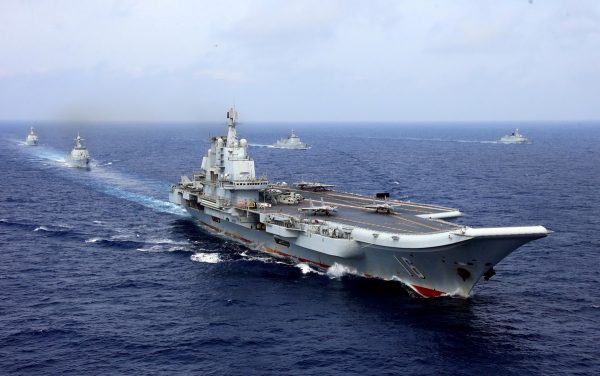The two countries have put forward contrasting proposals for maritime delimitation, and each can find supporting cases or international legal articles to prop up its position.
Employing the concept of equidistance, Japan has drawn a hypothetical median line based on its own interpretation of the United Nations Convention on the Law of the Sea (UNCLOS). China rejects this formulation. Citing instead the UNCLOS continental shelf regime, it holds that the East China Sea continental shelf is a ‘natural prolongation’ of the Chinese mainland that extends eastward to the Okinawa Trough. China argues that this detail, which provides it with a legal rationale to seek jurisdiction past Tokyo’s median line and out to the trough, must be considered when delimiting the boundary.
Further complicating the situation is the two countries’ sovereignty dispute over the Senkaku/Diaoyu islands, which Japan uses as the baseline for its median line. Japan’s decision to nationalise three of the disputed islands in September 2012 triggered a diplomatic crisis that sank China–Japan relations to their lowest point since the normalisation of the bilateral relationship in 1972.
What’s more, even according to Japan’s median line, China’s seismic and exploration activities take place on its own side. So from Beijing’s point of view, its resource development activities in the East China Sea are legitimate and Japan should stop demanding their termination.
Because of the great differences in the two countries’ positions, Japan–China maritime delimitation is yet to be conducted and cannot be completed any time soon. Meanwhile the two countries have put forward two different ‘lines’ for delimitation. Should both countries be barred from conducting resource development activities in the disputed territory until the boundary is settled? Perhaps, but a more realistic strategy may be to adopt a conflict avoidance regime for the East China Sea.
After six years with no state visits between China and Japan, Chinese Premier Li Keqiang visited Japan in May 2018 after the resumed China–Japan–South Korea trilateral summit in Tokyo. Japanese Prime Minister Shinzo Abe then visited Beijing in October 2018 to commemorate the 40th anniversary of the China–Japan Treaty of Peace and Amity. During Abe’s visit, it was announced that the bilateral relationship had been brought back on track.
An important step in building a conflict avoidance regime for the East China Sea is the establishment of the maritime and aerial communication mechanism between Japan and China. The mechanism was initially proposed in 2007 but formal agreement and implementation was hindered by fluctuations in the bilateral relationship. For some time, Japan held that the mechanism should not be applicable to the waters and air space around the Senkaku/Diaoyu islands, while China believed it should.
A compromise was finally reached during the bilateral maritime affairs consultation in December 2017 in China. The two countries agreed that the establishment of the new mechanism would not affect their respective legal positions and did not specify the geographical scope to which it would be applicable.
Launched in June 2018, the mechanism established and set out rules for direct communication between China’s People’s Liberation Army (PLA) and Japan’s Self Defense Forces (SDF). It also established a hotline between the PLA and the SDF as well as plans for an annual meeting between the two countries hosted on a rotating basis.
The signing of the Japan–China Maritime Search and Rescue agreement during Abe’s October 2018 visit is another positive step. Together with the maritime and aerial communication mechanism, it will help to improve communication between the two countries and avoid misunderstandings that might lead to clashes.
Keeping maritime problems under control creates more room for Japan and China to work together in other areas. Notably, there are a number of opportunities for cooperation in third countries.
Japan is now joining, rather than fighting, China’s Belt and Road Initiative. Over 50 agreements on joint infrastructure projects with a total value exceeding US$18 billion were signed during Abe’s visit to China. The Japan Bank for International Cooperation and the China Development Bank will collaborate to provide joint loans to third-party countries for infrastructure investment.
In the meantime, China–South Korea negotiations for maritime demarcation in the Yellow Sea are underway. Hopefully progress in these negotiations can offer lessons for Japan and China to find a way forward in the East China Sea.
Ren Xiao is Professor and Director of the Centre for the Study of Chinese Foreign Policy at Fudan University in Shanghai, China.

